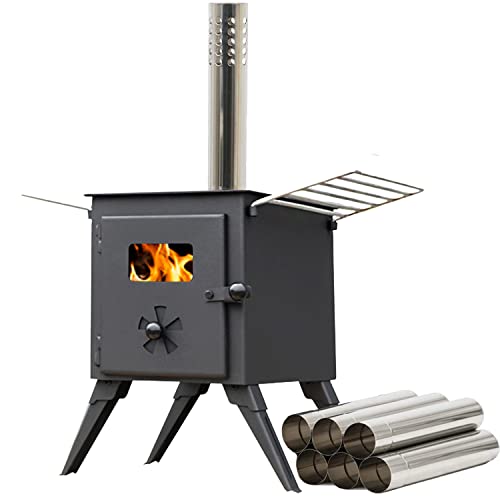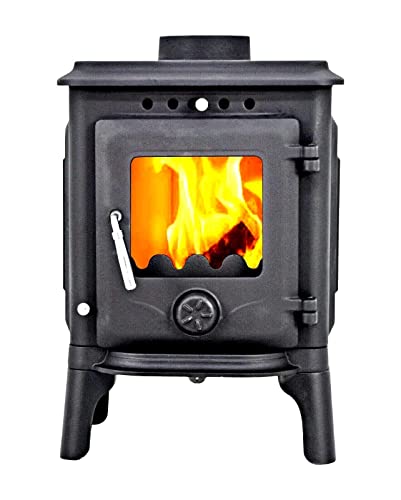Maintaining a Wood Burning Fireplace
 The sound of a wood-burning fireplace is a wonderful way to warm up a home. If you have one, it's essential to keep it maintained regularly to prevent dangerous creosote build-ups. The sound of a wood-burning fireplace is a wonderful way to warm up a home. If you have one, it's essential to keep it maintained regularly to prevent dangerous creosote build-ups.
A damper is an important element in maintaining a high quality combustion. The type of firewood used can be a factor and hardwoods like oak and ash producing less creosote than softwoods.
Energy Efficiency
Wood fireplaces are a stunning amenity that creates a cozy ambiance and provides heat. They aren't energy efficient and can contribute to air pollution if not maintained correctly. The kind of wood used as well as the condition and quality of the firebox, chimney installation and chimney can significantly affect the efficiency of the unit.
The main fuel source for a traditional wood burning stove is firewood, which is usually purchased in a face cord or full cord (measured at 4'x8'x8'). Firewood must be "seasoned" to reduce its water content and improve its energy density before use. If the wood is wet it won't burn effectively and will create a lot creosote. The process of preparing wood burning stove small for seasoning can take months or even a whole year depending on the weather and the conditions of the climate.
Wood burning fireplaces require a significant investment of time and money to keep them properly. In addition to purchasing an enormous amount of firewood, owners should regularly inspect and clean their fireplace. This is to ensure that the chimney is clear of obstructions, that it is operating properly, and that there isn't any combustible materials close to the fireplace. Regular cleaning and inspections can reduce the risk of chimney fires and room fires.
Smoke from wood-burning stoves has fine particles, which can damage the lungs and lead to serious health issues like lung disease, cardiovascular disease and heart attacks. It also releases toxic air pollutants such as nitrogen oxides, volatile organic compounds, formaldehyde and benzene. Wood smoke is a contributor to the reductions in greenhouse gases and ozone which can affect the earth's climate.
Effective EPA-certified wood stoves employ secondary combustion to minimize the production of harmful emissions during the firing. These stoves also require a properly size chimney as well as a flue liner to optimize performance. It is also important to buy seasoned firewood and beware of the temptation to add accelerants like gasoline, lighter fluid or butane torch to the fire, as this can overload the fire and cause a risky situation. In addition homeowners should keep their firewood away from the house to help prevent termite infestation.
Cleanliness
outdoor wood burner-burning fire places are an excellent alternative to other heating methods. They also create a relaxing ambience. They can be used for primary or as supplemental heat and can be eligible for tax credits. They can be messy and require regular cleaning to avoid soot and creosote buildup. A fireplace that is not cleaned can release harmful odors and toxic substances which can negatively impact the air quality in your home.
When burning wood in the fireplace, it is crucial to use only dry firewood. Kiln dried firewood aids in reducing creosote buildup as well as soot. Kiln dried firewood is processed in a heated oven, or kiln, to eliminate all of its moisture content. It is best wood burner stoves to only burn clean and seasoned wood that has been split into pieces and then stacked for several months prior to use.
Before starting a fire, remove ash from the floor of the fireplace and around the smoke shelf and grate. Make sure that the ashes are completely cool prior to placing them in the metal waste bin to be disposed of. Make use of a brush or a broom to sweep away any other stray materials that have accumulated outside of the fire.
Wear gloves and an apron while cleaning a fireplace to shield yourself from dust, soot and dirt that can be accumulated. To keep your furniture safe from stains, clean the area and cover it with drop cloths. Wear a dust mask to ensure you don't breathe in any ash or particles of soot.
Begin by filling up an enormous bucket with one gallon of warm water. Add 3.8 tablespoons of trisodiumphosphate (TSP), 1 cup of bleach and 2 tablespoons of household ammonia. Mix the mixture well, and then use a nylon brush to scrub the fireplace's walls and the surrounding areas. After scrubbing the walls and the surrounding areas of your fireplace, wipe it off with an aqueous, damp cloth.
Repeat the scrubbing, washing and wiping until all visible stains are removed from your fireplace. Once you're satisfied with the cleanliness then use the glass cleaner that's safe for wood-burning stoves to clean the glass doors.
Aesthetics
Wood fireplaces have a beauty that modern gas or propane fireplaces cannot match. The rustic appearance of fireplaces made of wood as well as the roar of a burning fire and the cozy feeling they provide have stood the test time. This is a feature that a lot of people seek when looking for a fireplace.
Wood-burning fireplaces are great for heating your home However, they also emit harmful gasses. These include carbon monoxide and smoke that can cause lung damage. It is crucial to have an effective system to eliminate these harmful substances, even if fireplaces are well ventilated. Many people prefer zero clearance designs for wood-burning fireplaces as they reduce the amount harmful gasses that enter their home.
There are a variety of ways to make your wood fireplace more appealing and unique. You can paint it to be in line with the decor of your living room or use reclaimed wooden to give it a more rustic look. You can also add an edifice of stone that leads to the fireplace, creating an exciting and functional element in your home.
You can also change the color of your chimney. A popular choice is black, which is beautiful and is a perfect match for most homes. You can also paint your fireplace white to make the room appear larger and create a bright airy feel. Gray is a third option that works well with many different styles and is a trendy trend. Some homeowners mix gray and beige together and call it greige to show their flexibility and aesthetic.
The best way to make a fireplace look less old fashioned or obtrusive is to paint it to match the walls around it. This can be done in a deep neutral that is on-trend, like grey, or a warm and earthy tone such as brick or terracotta red. The idea is to create a unified space that does not draw attention to itself, but rather blends in with the rest of the room. If you are unsure about which colour to go for, you can always ask a professional for advice.
Safety
If they are not maintained and operated in a safe manner If they are not maintained and operated properly, wood burning fireplaces could pose serious safety risks. They emit fine particle pollution that can get into the lungs, causing lung diseases. They also release dangerous air pollutants like carbon monoxide volatile organic compounds, nitrogen oxides, and benzene. Wood smoke contributes to climate change by releasing methane and carbon dioxide.
The flue of a wood stove needs to be regularly cleaned and inspected to ensure that it functions properly. A clean and well-functioning chimney flue will help to stop dangerous carbon monoxide leaks and chimney fires.
If the flue's liner is becoming worn, it should be replaced or repaired as soon as it becomes apparent. Keep flammable materials, such as drapes, curtains and other objects that ignite, away from the small Wood burning stoves for sale stove. It is recommended to set up cross-ventilation which allows warm air through the house so that it doesn't get pushed back up the chimney.
Clean up the ashes regularly to prevent them from blocking airflow and accumulating too deeply. As much ash can limit the oxygen supply to logs and reduce combustion efficiency, which also results in more smoke. The ashes can be kept in a metal container or in a non-combustible container.
Children should be kept away from the fireplace particularly in the case of an open glass front. They can get burns when they touch hot surfaces during and after the fire. The numerous tools used to maintain fireplaces, such as pokers, shovels, log lifers and brushes can be hazardous for children to handle. A three-foot "safety zone" is recommended around the fireplace to avoid children accidentally coming into contact with it.
It is also a good idea to install a carbon monoxide detector and alarm in the home, particularly if there is a wood stove. Carbon monoxide can build up when the chimney and wood stove aren't functioning correctly, and it is a poison to breathe.
 It is also essential to verify the local, state and tribal regulations regarding wood-burning fireplaces. These rules could include rules for nuisances and odors, "no-burn days" and limitations on visible emissions or the opacity of chimney smoke. These laws are usually focused on reducing air pollution and are put in place to protect the health of the public. It is also essential to verify the local, state and tribal regulations regarding wood-burning fireplaces. These rules could include rules for nuisances and odors, "no-burn days" and limitations on visible emissions or the opacity of chimney smoke. These laws are usually focused on reducing air pollution and are put in place to protect the health of the public.
|